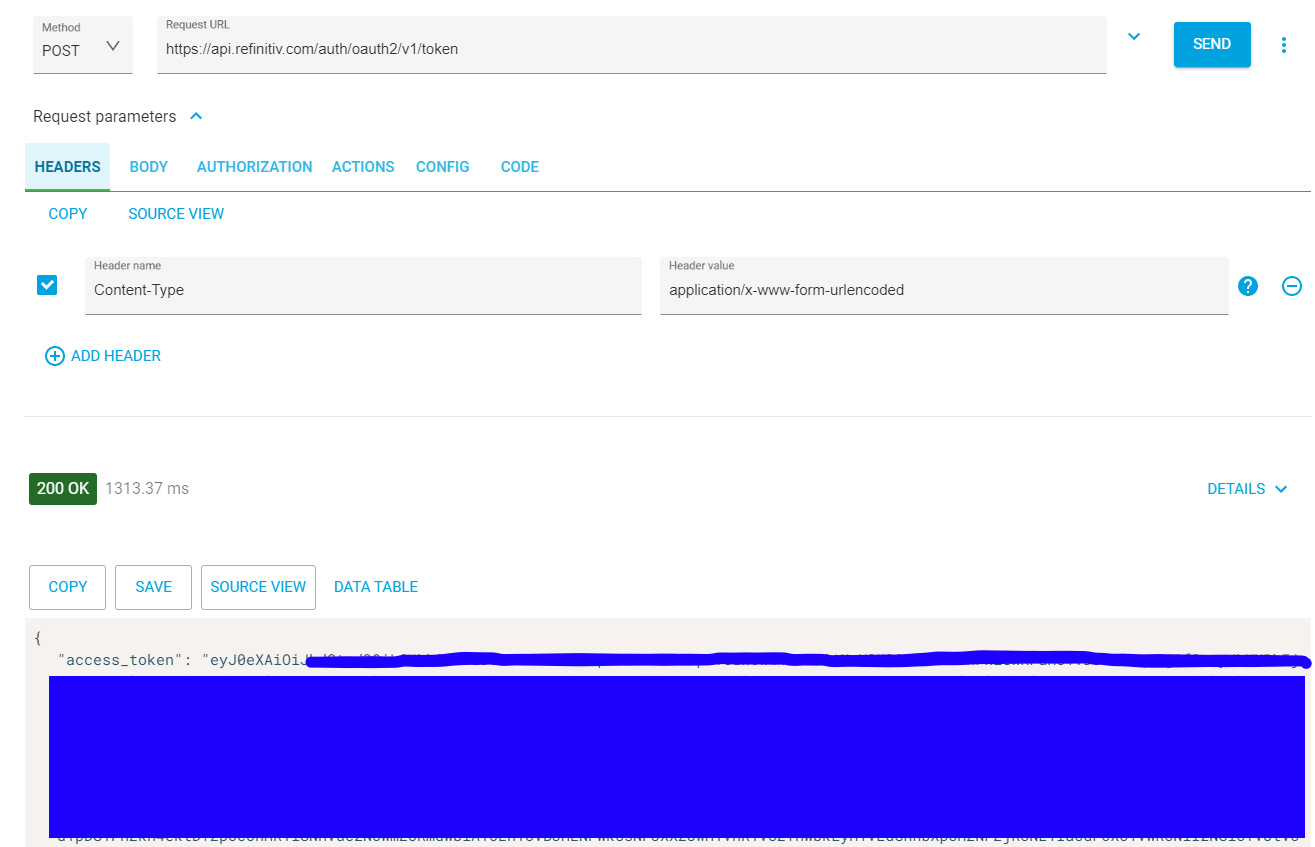Greetings! We're having an issue with the very first authentication request. I.e. we registered app and got AppKey, got a machine ID with corresponding machine-specific password, and trying to arrange a REST POST request according to documentation.
Address:
https://api.refinitiv.com:443/auth/oauth2/v1/token
Headers:
Accept: application/json
Authorization: Basic our_app_key_value
Content-Type: application/x-www-form-urlencoded
content-length: actual_length_value
Body:
grant_type=password&scope=trapi&username=our_machine_id&password=our_machine_pwd&client_id=our_app_key_value
Sending this, we're getting {"error":"access_denied" ,"error_description":"Invalid username or password." }
If we change address to https://api.refinitiv.com/auth/oauth2/v1/token , we're getting {"error":"access_denied" ,"error_description":"Account locked out due to provide incorrect password." }
No matter if takeExclusiveSignOnControl is set or not.
Could anyone please help to reveal the root of problem? Support may only reset our machine password, however the problem is probably somewhere else.








